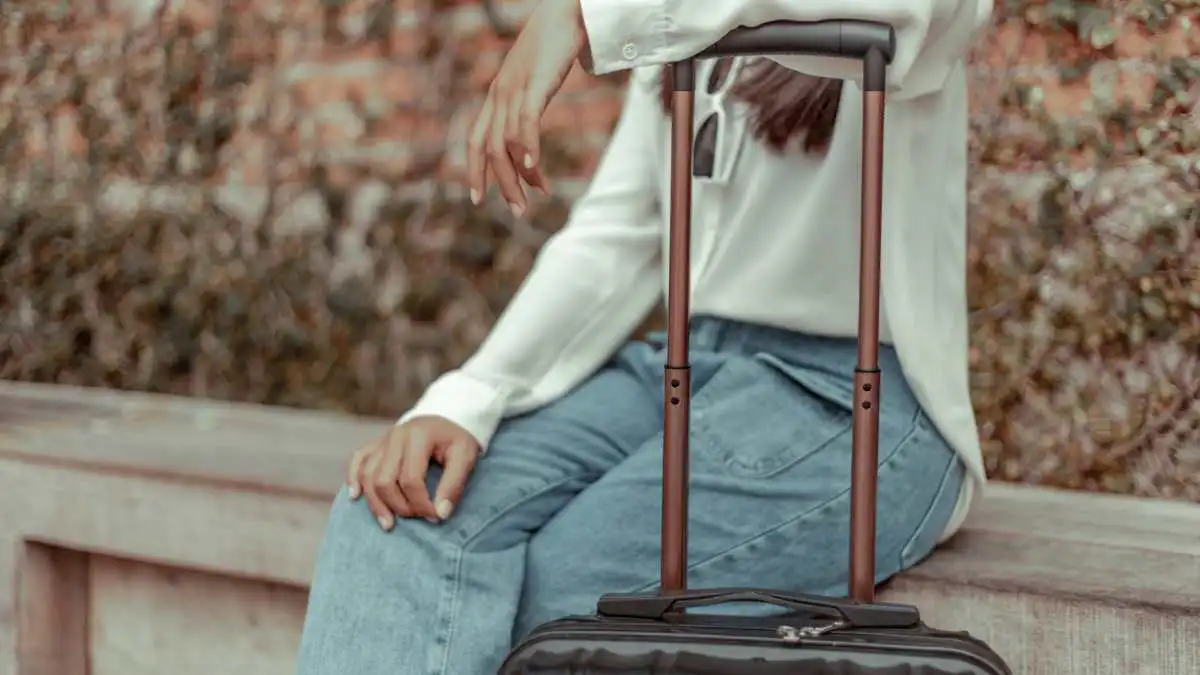Travel
20 Common Mistakes to Avoid While Travelling to Italy

Italy is a dream destination for many travelers, offering a mix of history, art, stunning landscapes, and incredible cuisine. However, despite its allure, many visitors make common mistakes that can lead to frustration and missed opportunities during their trip.
Understanding these pitfalls and knowing how to avoid them will help ensure you have an unforgettable Italian experience. Here’s a guide to 20 common mistakes to avoid while traveling to Italy.
1. Overpacking Your Itinerary
One of the most common mistakes is trying to see everything in a short period. Italy offers so much, from Rome’s ancient ruins to the canals of Venice, but visiting too many cities or attractions can leave you feeling rushed and exhausted. Instead, take the time to enjoy a few cities deeply. Rome deserves at least 3-4 days, Florence 2-3 days, and Venice 2 days.
2. Booking Accommodations in the Wrong Locations
Staying in remote areas to save money may seem like a good idea, but it often leads to long commutes and lost time. Opt for accommodations close to city centers or in neighborhoods like Trastevere in Rome or Santo Spirito in Florence, where you can easily access the main attractions while experiencing authentic local life.
3. Ignoring Seasonal Factors
Italy’s peak tourist season, especially during the summer, brings huge crowds and higher prices. Consider traveling during the shoulder seasons of April-May or September-October. The weather is still pleasant, and you’ll experience fewer crowds, allowing for a more relaxed and authentic experience.
4. Secure Digital Connectivity
In today’s connected world, having reliable access to the internet is essential for navigation and communication. Avoid relying on expensive roaming plans or constantly searching for Wi-Fi hotspots. Choose an esim for italy travel, which gives seamless connectivity at lower costs and ensures you’re always connected.
5. Relying Too Heavily on Rental Cars
While driving through the Tuscan countryside is a dream, renting a car in cities like Rome or Florence can be more trouble than it’s worth. Many city centers are equipped with restricted traffic zones (ZTL), and parking is both difficult and expensive. Public transportation is often a better and more cost-effective option.
6. Misunderstanding Italian Train Travel
Italy’s rail system is one of the best in Europe, but many travelers make mistakes when it comes to train travel. Always remember to validate your ticket at the station before boarding a regional train, as failure to do so can result in fines. High-speed trains often require seat reservations, so book your tickets in advance to secure the best prices.
7. Airport Transfer Miscalculations
The distance from airports to city centers can be deceiving. For example, Fiumicino Airport in Rome is about 30 km from the city center, and Milan Malpensa is nearly 50 km away. To avoid paying inflated taxi fares, always use official taxis or pre-book shuttle services. Express trains are also a fast and affordable option to get into the city.
8. Dining at the Wrong Time
Italians eat on their schedule, and tourists often make the mistake of showing up for meals at odd hours. Lunch is typically served from 12:30-2:30 pm, and dinner usually begins at 7:30 pm or later. If you eat outside these times, you’re more likely to end up in touristy restaurants with less authentic food.
9. Dressing Inappropriately
Italians are known for their sense of style, and dressing appropriately is essential, especially when visiting religious sites. Many churches require visitors to cover their shoulders and knees. Avoid wearing athletic wear, shorts, or flip-flops outside of the beach areas to blend in with the locals and show respect for the culture.
10. Language Barrier Challenges
Though many Italians in tourist areas speak English, making an effort to speak Italian will go a long way in building rapport with locals. Simple greetings like “buongiorno” (good morning) or “grazie” (thank you) are appreciated and can lead to friendlier interactions. A translation app can also be a helpful tool when navigating menus or asking for directions.
11. Bringing Unnecessary Items
Avoid packing items you won’t need, such as hair dryers (most hotels provide them), excessive clothing changes, or valuable jewelry that could attract unwanted attention. Instead, pack light and focus on versatile, wrinkle-resistant clothes that are appropriate for different occasions.
12. Touching Produce at Markets Without Gloves
In Italy, it’s customary to let the vendor select the produce for you at markets, especially when buying fruits and vegetables. Touching the produce yourself is considered impolite, so always wait for the vendor to serve you.
13. Using “Ciao” with Strangers
While “ciao” is commonly used among friends and family, it can be too informal when addressing strangers. When meeting someone for the first time or interacting with people in formal settings, it’s better to use “buongiorno” (good morning) or “buonasera” (good evening).
14. Rushing Meals
Meals in Italy are meant to be savored and enjoyed slowly. Rushing through your meal to move on to the next activity can lead to a less satisfying experience. Take time to enjoy each course, and embrace the Italian tradition of a leisurely meal.
15. Ordering a Cappuccino After Meals
Italians typically avoid drinking cappuccino after a meal. It’s seen as a breakfast beverage, and ordering it after lunch or dinner can mark you as a tourist. If you want a coffee after a meal, opt for an espresso instead.
16. Comparing Italian Cuisine to American Italian Food
Authentic Italian food is very different from what you may be used to at Italian-American restaurants. Don’t expect huge portions of pasta or heavy sauces. Embrace the simplicity and freshness of the ingredients, and be open to trying regional specialties that may be unfamiliar.
17. Not Researching Common Scams
Like any popular tourist destination, Italy has its share of scams. Be cautious of street vendors offering “free” items or people asking you to sign petitions. Pickpocketing is also common in crowded areas, so always be vigilant and keep your belongings secure.
18. Not Understanding ZTL Zones
Many historic centers in Italy have restricted traffic zones (ZTL) where cars are not allowed. Visitors who unknowingly drive into these areas can face steep fines, which often arrive months after the trip. Be sure to familiarize yourself with the ZTL zones before renting a car in cities.
19. Assuming Public Transportation Is Inconvenient
Italy’s public transportation system is extensive and efficient, especially in major cities. Relying on taxis or rental cars can be unnecessary, as buses, trams, and trains are often the quickest and most affordable way to get around.
20. Not Embracing the Slow Pace of Life
Italy is known for its “piano, piano” philosophy—taking things slowly. Don’t rush through your trip trying to check off every attraction. Instead, embrace the slower pace, savor the moments, and take the time to appreciate the little things—whether it’s a quiet coffee in a local café or a leisurely stroll through a charming neighborhood.
FAQs
1. What is the best time to visit Italy to avoid crowds?
The best time to visit Italy is during the shoulder seasons, in April-May or September-October. The weather is still pleasant, and the tourist crowds are fewer, allowing for a more relaxed and authentic experience.
2. Do I need to speak Italian to travel around Italy?
While many Italians speak English in tourist areas, learning a few basic phrases like “buongiorno” (good morning) and “grazie” (thank you) can enhance your experience. Italians appreciate when visitors make an effort to speak their language, and it can lead to friendlier interactions.
3. Is it necessary to rent a car in Italy?
It depends on your travel plans. In cities like Rome or Florence, it’s better to rely on public transportation as rental cars can be expensive and parking is limited. However, if you’re visiting the Tuscan countryside or rural areas, renting a car may be more practical.
Conclusion
Italy is a country that offers an incredible variety of experiences, from art and history to food and scenic beauty. However, to truly enjoy all that it has to offer, avoiding common travel mistakes is key. By planning your itinerary wisely, embracing local customs, and taking time to savor the culture, you’ll ensure a more enjoyable and memorable trip.
Whether you’re indulging in the slow pace of Italian meals or wandering through charming streets, the magic of Italy will be yours to discover—just make sure to avoid these common pitfalls to have the best experience possible. Buon viaggio!
Enjoyed this post? Dive deeper into related topics on our blog.
-

 BIOGRAPHY7 months ago
BIOGRAPHY7 months agoBehind the Scenes with Sandra Orlow: An Exclusive Interview
-

 HOME1 year ago
HOME1 year agoDiscovering Insights: A Deep Dive into the //vital-mag.net blog
-

 HOME1 year ago
HOME1 year agoSifangds in Action: Real-Life Applications and Success Stories
-

 BIOGRAPHY1 year ago
BIOGRAPHY1 year agoThe Woman Behind the Comedian: Meet Andrew Santino Wife




























